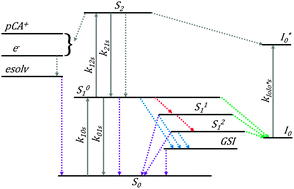Photoisomerisation quantum yield and non-linear cross-sections with femtosecond excitation of the photoactive yellow protein†
Abstract
The quantum yield of photoisomerisation of the photoactive yellow

* Corresponding authors
a
Imperial College London, Division of Molecular Biosciences, South Kensington campus, London, UK
E-mail:
j.vanthor@imperial.ac.uk
Tel: +44 (0)207 594 5071
The quantum yield of photoisomerisation of the photoactive yellow

 Please wait while we load your content...
Something went wrong. Try again?
Please wait while we load your content...
Something went wrong. Try again?
C. N. Lincoln, A. E. Fitzpatrick and J. J. V. Thor, Phys. Chem. Chem. Phys., 2012, 14, 15752 DOI: 10.1039/C2CP41718A
To request permission to reproduce material from this article, please go to the Copyright Clearance Center request page.
If you are an author contributing to an RSC publication, you do not need to request permission provided correct acknowledgement is given.
If you are the author of this article, you do not need to request permission to reproduce figures and diagrams provided correct acknowledgement is given. If you want to reproduce the whole article in a third-party publication (excluding your thesis/dissertation for which permission is not required) please go to the Copyright Clearance Center request page.
Read more about how to correctly acknowledge RSC content.
 Fetching data from CrossRef.
Fetching data from CrossRef.
This may take some time to load.
Loading related content
